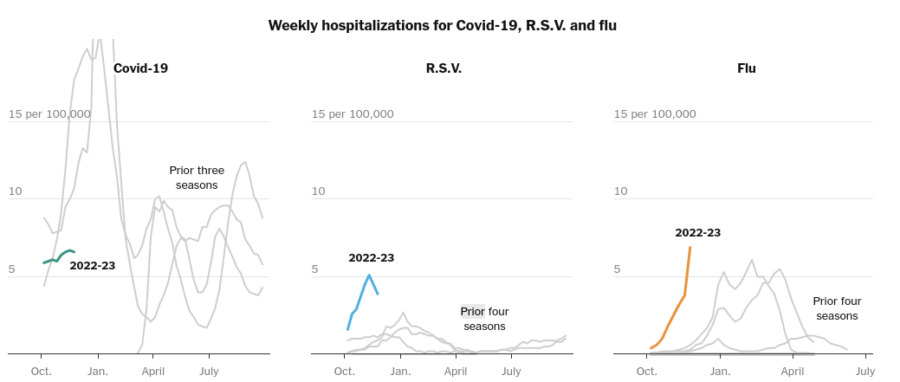PFAS Are Here To Stay: A Dive Into Wisconsin’s Water Crisis
December 17, 2021

Wisconsin, a rural and agriculture-dependent state, faces challenges in water quality that will affect future generations for decades to come. Long-lasting chemicals and concentrated fertilizers are becoming increasingly problematic in counties across the state, including well water surrounding SPASH.
The “Forever Chemicals,” PFAS, PFOS, and PFOA:
PFAS, PFOS, and PFOA are a category of man-made chemicals that have numerous health effects on humans, such as an increased risk of cancer, developmental delays, decreased fertility, and decreased immune health. They are created after carbon and fluorine atoms are bonded together, forming an almost indestructible bond that lasts for decades in the environment without breaking down. According to the National Institute of Environmental Health Sciences (NIH), “…scientists are unable to estimate an environmental half-life for PFAS, which is the amount of time it takes 50% of the chemical to disappear.” Scientists may not know how long PFAS lasts in the enviroment, but it is certain that PFAS have already “leached into our soil, air, and water.” says NIH.
With the knowledge of the adverse health effects PFAS causes, why are they still used? PFAS are actually a short-chain substitute for the previously used, and now no longer produced in the U.S., PFOS and PFOA. PFOS and PFOA are nearly identical to PFAS and cause the same effects on humans and wildlife, causing the end of their production. However, PFOS and PFOA are still produced in other countries other than the U.S., and with global trade, citizens can still come in contact with them. PFAS are used due to their ability to repel water, grease, and withstand heat. Therefore, according to the United States Environmental Protection Agency, levels of PFAS are present in: food derived from living animals, wrappers, popcorn bags, clothing, certain shampoos, cosmetics, and much more. According to the frequent use of PFAS, the versatility of PFAS–and alike–evidently outweighs the consequential risk towards human life.
Nitrates and Their Controversial Effects:
Another contributor to water contamination is nitrates: naturally occurring compounds that are produced by plants and animals. Plants use nitrates to produce protein essential for the plant’s growth. However, not all of the nitrates released into the soil are used by the plant. Fertilizers contribute concentrated amounts of nitrates into the soil which can leak into the groundwater.
With the aforementioned lofty nitrate levels, more research is being conducted on the possible effects on humans. Research suggests nitrates can lead to cancer later in life and can also affect how the body metabolizes sugar, leading to diabetes. A study in 2016 from the National Center for Biotechnology Information, a branch of the United States National Library of Medicine, found: “…animal, and human studies have confirmed that N-nitroso compounds, nitrate and nitrite play a role in development of T1DM[Type One Diabetes]…” N-nitroso compounds are found in processed meat, such as deli-meat. Furthermore, people with levels close to or higher than the recommended amount of nitrates in well water are more likely to develop Type One Diabetes.
However, the same study later goes on to state, “Ecologic surveys, case-control and cohort studies have indicated conflicting results in relation to nitrate-nitrite exposure from drinking water and the risk of type 1 diabetes.” Data on the subject has been inconclusive, however, scientists urge more research to be done on the subject. A peer reviewed journal published by the International Water Association expressed, “Even a small increased cancer risk from contaminated drinking water could translate into a very large public health problem.” Similar to PFAS effects on human health, elevated nitrates could lead to a domino effect in the populations health.
Arsenic and Alike:
Wisconsin is also faced with other types of water contaminants that can seem inconsequential compared to PFAS and Nitrates, however, arsenic can cause harmful effects as well. According to the Department of Human Health services, ”Arsenic is primarily an issue in private wells. The only way to know if your private well has arsenic is to test.” Wisconsin well water can come in contact with Arsenic in layers of bedrock found throughout the state. Arsenic poisoning can cause muscle weakness and vomiting, and “…has been detected in every county in the State of Wisconsin.” says DNR. Other elements in well water, such as Manganese, can contribute to negative neurological effects. A sign of high manganese in well water is the staining of bathtubs and sinks, however, Manganese is not dangerous in low doses.
In Conclusion:
Understanding the significance of water quality is a great step towards safe drinking water. Although solutions for removing PFAS and nitrates are expensive, other solutions such as regulations and prevention bar the chemicals from entering groundwater in the first place. Regularly testing water can also be beneficial to ensure drinking water is safe. SPASH students will be affected in the years to come by water contamination and should stay informed on the issue to keep themselves and others in their family safe.




































































